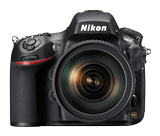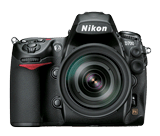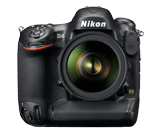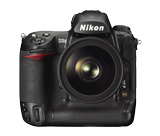If you like this post, help us share it
The new Nikon D800/Nikon D800E (press release) which has a whopping 36 MP sensor adopted many of the new features from the Nikon D4, but housed in a D700 size magnesium alloy body.
If you are already convinced to get the Nikon D800/D800E, You can pre-order yours at B&H (Nikon D800 and D800E) .
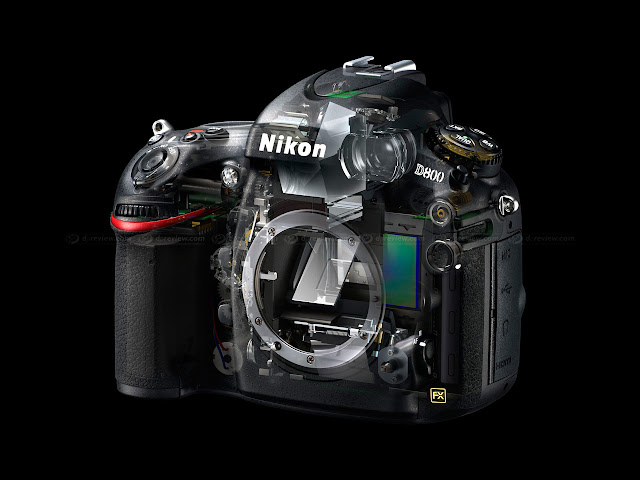
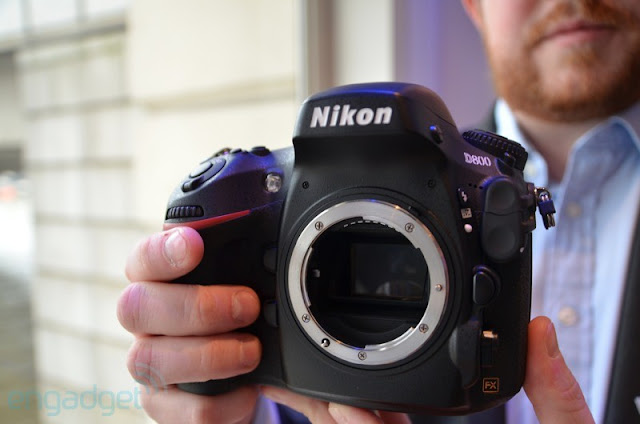
What’s interesting is the introduction of a variant model Nikon D800E which has the low pass filter “altered”. Reducing false color and moiré is the main job of the optical low-pass filter located in front of the image sensor. However, this benefit is generally gained with a small sacrifice of sharpness. Moiré occurs in scenes containing repetitive details, such as strong vertical lines in architecture.You can expect even greater resolution and clearer definition, however aliasing and moiré patterns may be more noticeable in some cases.

The low pass filter is made up of three different layers: the first layer is the low pass filter to split image horizontally, the middle layer is an IR filter and the last layer is the low pass filter to split image vertically. The first LPF splits and shifts the image microscopically in the horizontal direction, while the second LPF does the same in the vertical direction. This results in four copies of the image slightly offset for each other on the sensor surface. As noted, the shift between the images is truly microscopic, typically less than a pixel. The net result is that the image is blurred slightly, hopefully by just the amount needed to avoid moiré patterns. In the Nikon D800E, the low pass filter is still present (so it doesn’t cost less to produce a D800E), however, the arrangement with the second low pass filter is altered to counter the effect as shown above.
A new battery grip is used for the D800, you can get approx. 5 fps continuous shooting speed in FX format or 6 fps continuous shooting speed in DX format .
Here is a list of the new features on the Nikon D800:
- 36 Megapixel
- ISO 100 to 6,400, expandable to 50 to 25.600.
- 91K-pixel RGB sensor for the more accurate Advanced Scene Recognition System
- New EXPEED 3 16 bits image-processing engine with superior, high-speed processing capabilities
- New Advanced Multi-CAM 3500FX autofocus sensor – 51 focus point AF system (15 focus points cross-type sensors, 11 focus points (five at center with an additional three to each side) are fully functional when lenses with a maximum aperture of f/8
- Full-HD movies 1920 x 1080; 30 fps/25 fps/24 fps
- High-speed response with a power-up time of approximately 0.12 s and a release time lag of roughly 0.042 s
- Durable shutter that has passed testing for 200,000 cycles
- Button backlights (illuminators) for increased visibility when working in dimly lit or dark situations
- A 3.2-inch, approximately 921k-dot LCD monitor
- Dual CF and SD memory card slot
- Uses EN-EL15 same as D7000
- Removal of low pass filter (Nikon D800E only)
- Approximately 146 × 123 × 81.5mm
- Weight 1000g (900g body only)
There are a lot of new and improved features on the D800 which is expected when you compare to a three year old D700. So what improvements have been made on the ergonomic design, processors, metering system and the brains behind the magnesium alloy body ?
The first aspect you will notice differently on the D4 is its ergonomic design. First, the red strip on the Nikon D4 has taken a transformation, it is now much slimmer and no longer has a triangular shape. Nikon loses the C/S/M switch and replaced with a simplified AF/M switch instead.
The hot shoe/eye piece bayonet mount has a better contour shape (more blended in) similar to the Canon design. On the D700, the bayonet mount feels like something sticking out, but now it is much more contoured.

Nikon D800 Nikon D700
Most ergonomic changes are located at the back, with most significant change to top left selector. Instead of three buttons on the top left shoulder, the Nikon D800 has four buttons. The new button is for Bracketing, and the other three handle white balance, image quality and ISO. The Drive Mode S, CH and CL is now much easier to access. The same five buttons are there on the left, but zoom in and zoom out buttons are swapped. The AF selection tool is replaced with the Movie/Still switch with the Live view button in the middle.
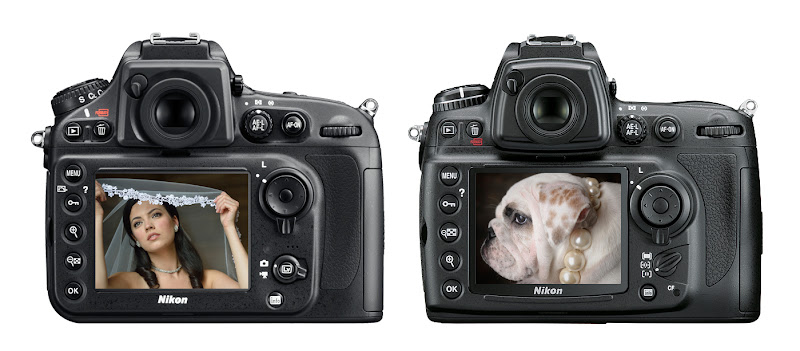
Nikon D800 Nikon D700
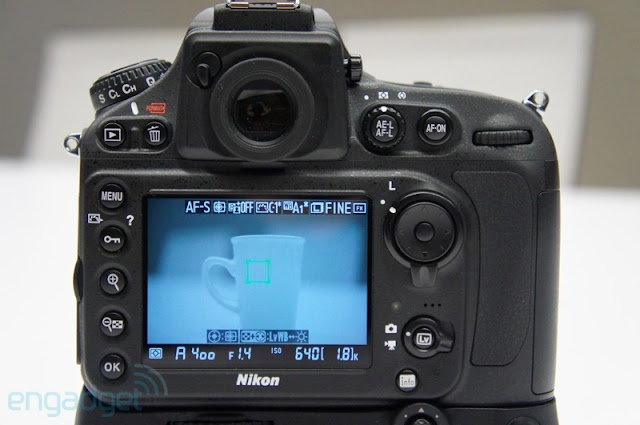
Top view shows a much more contoured design with the D800. Located next to the shutter-release button, there is a dedicated recording start button

The shutter button is also placed at a more convenient angle so your finger is in a more relax position. The metering switch has been removed as mentioned above.

The Nikon D800’s interface is different to the D4, it doesn’t have the gigabit LAN port, but it has earphone and mic inputs, HDMI port, USB 3 port and WT-5 port. The HDMI port allows the D800 to be connected to a larger LCD for viewing instead of using the 3.2” LCD. The WT-5 wireless transmitter will be compatible with the D800.


Nikon D800 is equipped with a newly designed 36.3 MP CMOS FX format image sensor. Each pixel is as large as 4.8µm (D4 – 7.3µm, D700 – 8.45µm). The D800/D800E render levels of texture, nuance and detail to your photography that, until now, have been the exclusive domain of the complicated medium-format system. You can expect an exceptional depth and definition in your images.

The EXPEED 3 Processor first introduced in Nikon 1 system is also adopted in the Nikon D800. It is also adopted in the D4 The EXPEED 3 is responsible for delivering outstanding system performance, high-speed processing, fast phase detection autofocus and the fastest data transfer rates.
Even when shooting in dim lighting at high ISO sensitivities, the camera’s noise reduction lowers noise without degrading image sharpness. Its massive, high-speed 16-bit image processing delivers smooth gradation and retain tone and detail.
The D800 provides low-noise performance at ISO 6400 and extends the range one EV further, compared with that of the D700, making ISO 100 standard
EXPEED 3 has been optimized for video as well, rendering movie with reduced moiré, false colours and “jaggies.”

Advance Scene recognition system with 91K pixel RGB sensor is the same as in the D4, it is the new standard compares to the traditional 1,005 pixel RGB sensor used in the D3s.
This advance 91K pixel RGB sensor allows accurate autofocus, auto exposure, i-TTL flash, Active D-Lighting and auto white balance result. Improve face detection is also made possible when shooting with the optical viewfinder.
The advance face detection in D4 will automatically recognize human faces and in the case where contrast lighting situation occurs, better auto exposure and enhanced i-TTL balanced fill flash are achieved.

Similar to the Nikon D4, the Nikon D800 retains 51 AF points, but with AF detection as low as –2 EV which is approximately the physical limit of human visibility through an optical viewfinder. This simply says, the D800 will be able to AF at the darkest place possible.
Refer to diagrams below:
(1) All 51 AF points of the D4 are usable with every AF NIKKOR lens of f/5.6 or faster. Of the 51 AF points, 15 are cross typed sensors in the central viewfinder area.
(2) Nine central cross type focus points and three points to the left and right of them in the middle line are compatible with aperture slower than f/5.6 and faster than f/8
(3) Five central focus points (1 cross typed sensor) and three points to the left and right of them in the middle line are compatible with f/8.



(1) Compatible with f/5.6 (2) Compatible with f/5.6 -f/8 (3) Compatible with f/8
 The D800/D800E are designed to stimulate cinematographers which can record 1080p Full HD video at 30/25 or 24p in H.264/MPEG-4 AVC format. Maximum recording time for a single clip is 29 min. 59 s. This is due to a limitation set to differentiate between cameras and video camcorders. This is much more superior to the D3s which only offers up to 720p/24 recording.
The D800/D800E are designed to stimulate cinematographers which can record 1080p Full HD video at 30/25 or 24p in H.264/MPEG-4 AVC format. Maximum recording time for a single clip is 29 min. 59 s. This is due to a limitation set to differentiate between cameras and video camcorders. This is much more superior to the D3s which only offers up to 720p/24 recording.
With the D4, there are three Full HD video modes: FX-based, DX-based or 1,920 x 1,080 crop movie format. The D800 offers two full Full HD video modes: FX-based and DX-based movie format.

The D800 is equipped with two card slots compares to 1 card slot that was offered from the D700. The D800/D800E CF memory card slot is compatible with the latest UDMA 7. The SD card slot is compatible with SDXC (Secure Digital extended Capacity) and UHS-I.
As a user thou, that means we have to carry both CF and SD cards in our bag if you want take advantage of the dual slots.

Nikon D800 uses the same type of Lithium-ion battery EN-EL15 as the D7000. It has a battery life of 900 shots per charge compare to 1000 shots per charge with the D700.
Previously Nikon explains even though the number of shots per charge has decreased but the performance of the battery is actually better. Read more here on how the Nikon D4 battery is better than the D3s even the number of shots per charge has decreased.

The Nikon D800 is 10% lighters that the D700 (900g vs 995g). Just like the D700, the D800 is weather and dust sealed and is made from magnesium alloy.
Check out some hands on images of the Nikon D800.




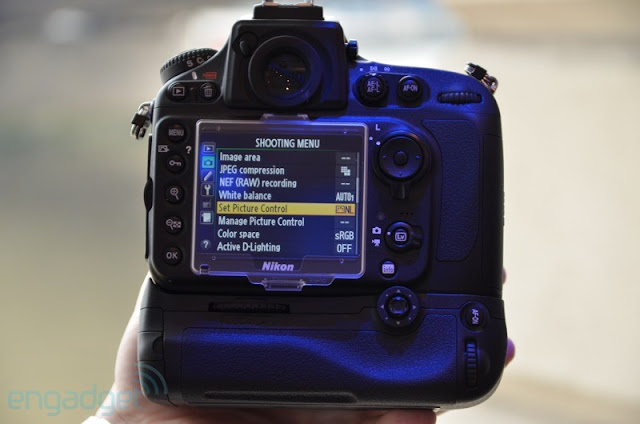
above images sourced from nikonusa.com, imageresource and engadget.com
If you are planning to get the Nikon D800/D800E, you can pre-order yours at B&H ( Nikon D800 and D800E) .
Nikon D800 vs D700 vs D4 vs D3X Specification Comparison
|
|
|
|
|
|
|
Lens Mount |
Nikon F bayonet mount |
Nikon F bayonet mount |
Nikon F bayonet mount |
Nikon F bayonet mount |
|
Effective Pixels |
36.3 million |
12.1 million |
16.2 million |
24.5 million |
|
Sensor Size |
35.9mm x 24mm |
36.0mm x 23.9mm |
36.0 x 23.9mm |
35.9mm x 24.0mm |
|
Image Sensor Format |
FX |
FX |
FX |
FX |
|
File Format Still Images |
JPEG: JPEG-Baseline Compliant with fine (approx 1:4), Normal (approx 1:8) or Basic (approx 1:16) Compression |
Compressed 12/14-bit NEF (RAW, Compressed): approx. 45-60 percent |
JPEG: JPEG-Baseline Compliant; can be selected from Size Priority and Optimal Quality |
Compressed 12/14-bit NEF (RAW, Compressed): approx. 45-60 percent |
|
Picture Control |
Landscape |
Monochrome |
Landscape |
Monochrome |
|
Storage Media |
CompactFlash© (CF) (Type I, compliant with UDMA) |
CompactFlash© (CF) (Type I, compliant with UDMA) |
CompactFlash© (CF) (Type I, compliant with UDMA) |
CompactFlash© (CF) (Type I/II, compliant with UDMA) |
|
Card Slot |
1 CompactFlash© (CF) card and 1 Secure Digital (SD) card |
1 CompactFlash© (CF) card |
1 CompactFlash© (CF) card and 1 XQD memory type card |
2 CompactFlash© (CF) cards |
|
Viewfinder Frame Coverage |
FX (36×24): 100% Horizontal and 100% Vertical Approx. |
95 % Approx. |
FX (36×24): 100% Horizontal and 100% Vertical Approx. |
100 % Approx. |
|
Viewfinder Magnification |
0.70x Approx. |
0.72x Approx. |
0.70x Approx. |
0.70x Approx. |
|
Interchangeable Focusing Screens |
— |
— |
— |
Type B BriteView Clear Matte VI |
|
Lens Compatibility at a Glance*** |
AF-S or AF lenses fully compatible |
AF-S or AF lenses fully compatible |
AF-S or AF lenses fully compatible |
AF-S or AF lenses fully compatible |
|
Fastest Shutter Speed |
1/8000 sec. |
1/8000 sec. |
1/8000 sec. |
1/8000 sec. |
|
Slowest Shutter Speed |
30 sec. |
30 sec. |
30 sec. |
30 sec. |
|
Top Continuous Shooting Speed at full resolution |
4 frames per second |
5 frames per second |
10 frames per second |
5 frames per second |
|
Exposure Compensation |
±5 EV in increments of 1/3, 1/2 or 1 EV |
±5 EV in increments of 1/3, 1/2 or 1 EV in increments of 1/3 |
±5 EV in increments of 1/3, 1/2 or 1 EV |
±5 EV in increments of 1/3 |
|
Mirror Lock Up |
Yes |
Yes |
Yes |
Yes |
|
ISO Sensitivity |
ISO 100 – 6400 |
ISO 200 – 6400 |
ISO 100 – 12,800 |
ISO 100 – 1600 |
|
Dynamic AF Mode |
Number of AF points: 9, 21, 51 and 51 (3D-tracking) |
Number of AF points: 9, 21, 51 and 51 (3D-tracking) |
Number of AF points: 9, 21, 51 and 51 (3D-tracking) |
Number of AF points: 9, 21, 51 and 51 (3D-tracking) |
|
Auto-area AF Mode |
Yes |
Yes |
Yes |
Yes |
|
Focus Modes |
Auto AF-S/AF-C selection (AF-A) |
Auto |
Auto AF-S/AF-C selection (AF-A) |
Continuous-servo (C) |
|
Maximum Autofocus Areas/Points |
51 |
51 |
51 |
51 |
|
Built-in Flash |
Yes |
Yes |
— |
— |
|
Flash Bracketing |
2 to 9 frames in steps of 1/3, 1/2, 2/3, or 1 EV |
2 to 9 frames in steps of 1/3, 1/2, 2/3 or 1 EV |
2 to 9 frames in steps of 1/3, 1/2, 2/3 or 1 EV |
2 to 9 frames in steps of 1/3, 1/2, 2/3 or 1 EV |
|
Top FP High Speed Sync |
Up to 1/8000 |
Up to 1/8000 |
Up to 1/8000 |
Up to 1/8000 |
|
Flash Sync Modes |
Front-curtain sync (normal) |
Front-curtain sync (normal) |
Auto FP High-Speed Sync supported |
Front-curtain sync (normal) |
|
Flash Compensation |
-3 to +1 EV in increments of 1/3, 1/2 or 1 EV |
-3 to +1 EV in increments of 1/3 or 1/2 EV |
-3 to +1 EV in increments of 1/3, 1/2 or 1 EV |
— |
|
White Balance |
Auto (2 types) |
Auto (2 types) |
Auto (2 types) |
Auto (2 types) |
|
Live View Shooting |
Photography Live View Mode |
Handheld mode |
Photography Live View Mode |
Handheld mode |
|
Movie |
HD 1,920×1,080 / 30 fps |
— |
HD 1,920×1,080 / 30 fps |
— |
|
Movie Audio |
Built-in microphone, monaural |
— |
Built-in microphone, monaural |
— |
|
Monitor Size |
3.2 in. diagonal |
3.0 in. diagonal |
3.2 in. diagonal |
3.0 in. diagonal |
|
Monitor Resolution |
921,000 Dots |
921,000 Dots |
921,000 Dots |
921,000 Dots |
|
Monitor Type |
Wide Viewing Angle TFT-LCD |
Super Density |
Wide Viewing Angle TFT-LCD |
Super Density |
|
GPS |
GP-1 GPS unit |
GP-1 GPS unit |
GP-1 GPS unit |
GP-1 GPS unit |
|
Battery / Batteries |
EN-EL15 Lithium-ion Battery |
EN-EL3e Lithium-ion Battery |
EN-EL18 Lithium-ion Battery |
EN-EL4 Lithium-ion Battery |
|
Battery Life (shots per charge) |
900 Battery Life (shots per charge) (CIPA) |
1,000 shots (CIPA) |
2,600 Battery Life (shots per charge) (CIPA) |
4,400 shots (CIPA) |
|
AC Adapter |
EH-5b AC Adapter |
EH-5a AC Adapter |
EH-6b AC Adapter |
EH-6 AC Adapter |
|
Approx. Dimensions |
Width 5.7 in. (144.78mm) |
Width 5.8 in. (147mm) |
Width 6.3 in. (160mm) |
Width 6.3 in. (159.5mm) |
|
Approx. Weight |
31.7 oz. (900g) camera body only
|
35 oz. (995g) camera body only |
41.6 oz. (1180g) camera body only |
43.0 oz. (1,220g) camera body only
|
Where can I find the equipment seen on this site?
If you find this site useful and planning to purchase any of the equipment seen on this site, please show your support by purchasing your photo equipment at B&H Photo Video, or through any of the affiliate links seen on this site.



